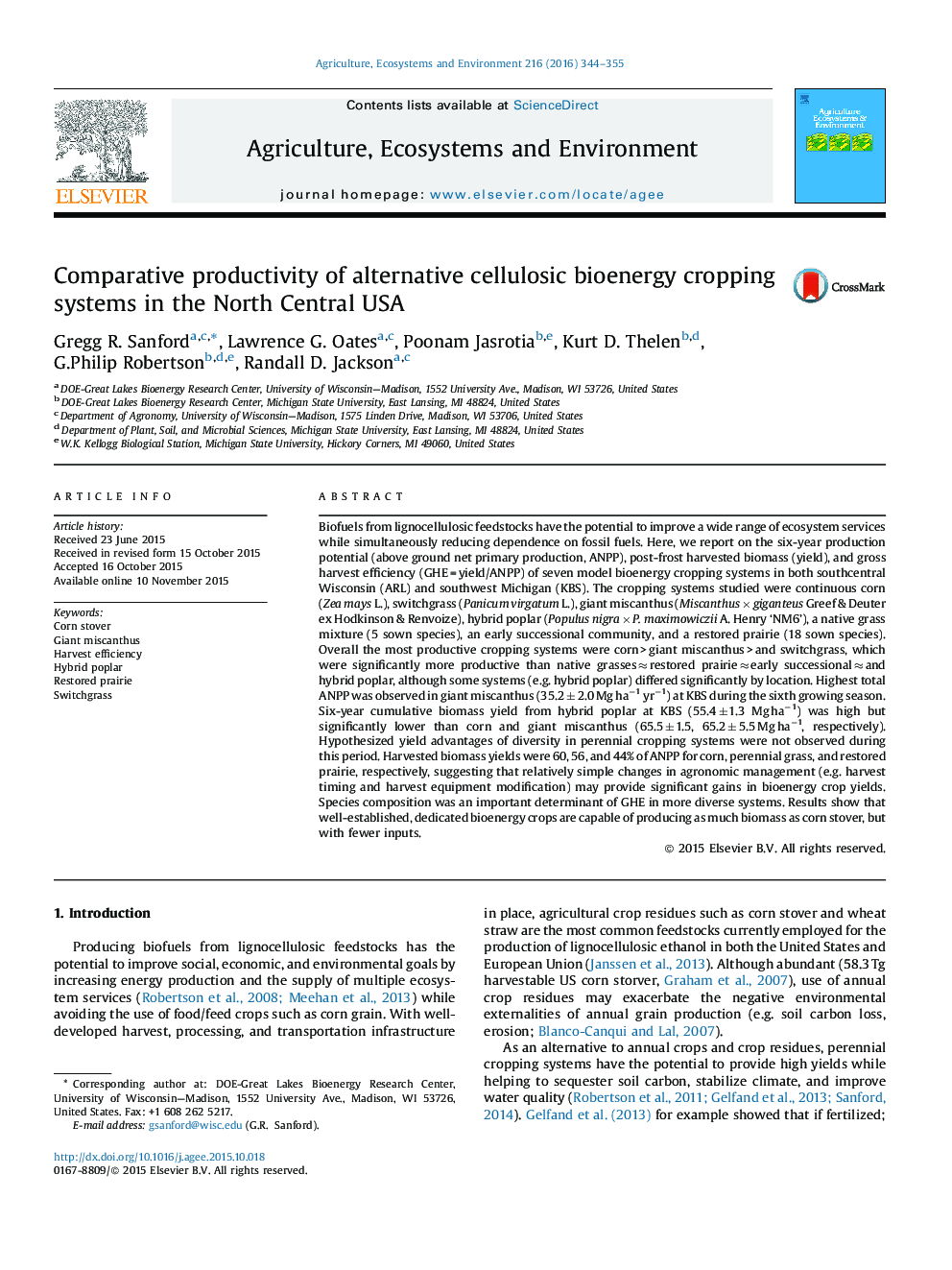| کد مقاله | کد نشریه | سال انتشار | مقاله انگلیسی | نسخه تمام متن |
|---|---|---|---|---|
| 2413658 | 1552036 | 2016 | 12 صفحه PDF | دانلود رایگان |
• Perennial bioenergy crops were highly productive relative to corn.
• Harvested yields lagged ANPP by as much as 60%.
• Production benefits from high diversity polycultures were not realized.
• Physiological constraints and seasonal complications may delay establishment.
Biofuels from lignocellulosic feedstocks have the potential to improve a wide range of ecosystem services while simultaneously reducing dependence on fossil fuels. Here, we report on the six-year production potential (above ground net primary production, ANPP), post-frost harvested biomass (yield), and gross harvest efficiency (GHE = yield/ANPP) of seven model bioenergy cropping systems in both southcentral Wisconsin (ARL) and southwest Michigan (KBS). The cropping systems studied were continuous corn (Zea mays L.), switchgrass (Panicum virgatum L.), giant miscanthus (Miscanthus × giganteus Greef & Deuter ex Hodkinson & Renvoize), hybrid poplar (Populus nigra × P. maximowiczii A. Henry ‘NM6’), a native grass mixture (5 sown species), an early successional community, and a restored prairie (18 sown species). Overall the most productive cropping systems were corn > giant miscanthus > and switchgrass, which were significantly more productive than native grasses ≈ restored prairie ≈ early successional ≈ and hybrid poplar, although some systems (e.g. hybrid poplar) differed significantly by location. Highest total ANPP was observed in giant miscanthus (35.2 ± 2.0 Mg ha−1 yr−1) at KBS during the sixth growing season. Six-year cumulative biomass yield from hybrid poplar at KBS (55.4 ± 1.3 Mg ha−1) was high but significantly lower than corn and giant miscanthus (65.5 ± 1.5, 65.2 ± 5.5 Mg ha−1, respectively). Hypothesized yield advantages of diversity in perennial cropping systems were not observed during this period. Harvested biomass yields were 60, 56, and 44% of ANPP for corn, perennial grass, and restored prairie, respectively, suggesting that relatively simple changes in agronomic management (e.g. harvest timing and harvest equipment modification) may provide significant gains in bioenergy crop yields. Species composition was an important determinant of GHE in more diverse systems. Results show that well-established, dedicated bioenergy crops are capable of producing as much biomass as corn stover, but with fewer inputs.
Journal: Agriculture, Ecosystems & Environment - Volume 216, 15 January 2016, Pages 344–355
